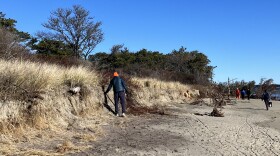A new report by a coalition of New England state-level food groups is laying out how the region could produce and consume more of its own food.
The New England State Food System Planners Partnership commissioned a new goal for the region to produce and consume 30% of its food by 2030. Included in the partnership are Vermont Farm to Plate, Food Solutions New England, and five other state-level organizations.
The report is a product of 16 researchers looking into the land, sea, labor needs, consumer purchase metrics, distribution trends, and population projections that will impact New England’s ability to feed itself in the coming years.
Additional private and state investment could lead to much of the infrastructure required for reaching long-term goals actually landing in Vermont.
Vermont is home to only 4% of New England’s population, but more than 30% of its agricultural land. Ellen Kahler, the executive director of the Vermont Sustainable Jobs Fund helped produce the report and recognizes Vermont’s crucial role.
“We do need to double down and do more," Kahler said. "We need to accelerate the protection of our farmland, getting it into conservation easements, getting it into the next generation of farmers who are actively working that land is the best way for us to protect the prime ag soils in the state and keep them in agricultural production, because we’re gonna need the food.”
Vermont contains more than 6% of New England's food system employment and 7.5% of its sales — a $3.3 billion statewide industry. Compared to states like Connecticut, where the ratio is flipped, Vermont can become a supplier to many of its neighbors.
“If we can move in that direction in a coordinated way, we will be less vulnerable to climate impacts that affect the whole region," Kahler said. "We will be more resilient in our ability to meet more of our needs, to be able to adjust and adapt when things get thrown at us.”
In 2019, New England had a total food expenditure of over $5,868 per person in the region. In order to meet the 30% goal, the average person will need to spend about $1,760 of that total on regionally-produced food.
Kahler sees this expenditure on New England produced food as a real possibility for many households
She said that local farmers need clearer paths to accessible supermarket chains.
"How can they make it easier for our producers to sell them product, so that they can put it on the shelves, so that consumers can say, 'Oh, wow, cool! I've been wanting some lettuce from Vermont', or, 'I'm exited about this specialty cheese from Vermont'."
In the end, she emphasized, it's up to the consumer to buy the local goods once they reach the stores.
Have questions, comments or tips? Send us a message.




